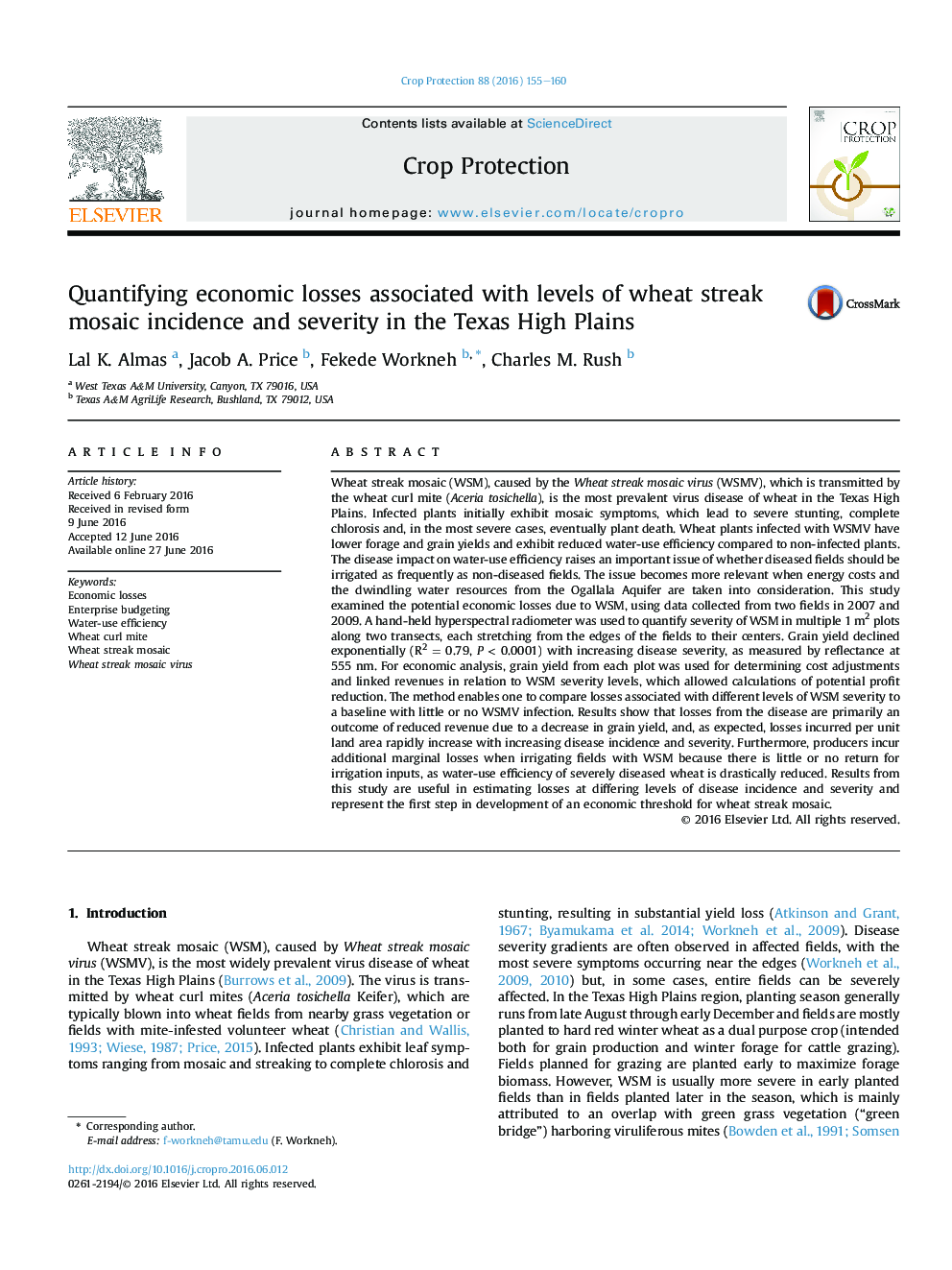| کد مقاله | کد نشریه | سال انتشار | مقاله انگلیسی | نسخه تمام متن |
|---|---|---|---|---|
| 4505537 | 1624299 | 2016 | 6 صفحه PDF | دانلود رایگان |
• Wheat streak mosaic is an important disease of wheat in the High Plains of the US sometimes occurring in epidemic proportions.
• Wheat producers do not separate diseased areas of the fields from disease free areas in management of their fields with little or no returns for their inputs from the affected areas.
• The current project is aimed at estimating economic losses at different severity levels so that economic thresholds would be established for management decisions.
Wheat streak mosaic (WSM), caused by the Wheat streak mosaic virus (WSMV), which is transmitted by the wheat curl mite (Aceria tosichella), is the most prevalent virus disease of wheat in the Texas High Plains. Infected plants initially exhibit mosaic symptoms, which lead to severe stunting, complete chlorosis and, in the most severe cases, eventually plant death. Wheat plants infected with WSMV have lower forage and grain yields and exhibit reduced water-use efficiency compared to non-infected plants. The disease impact on water-use efficiency raises an important issue of whether diseased fields should be irrigated as frequently as non-diseased fields. The issue becomes more relevant when energy costs and the dwindling water resources from the Ogallala Aquifer are taken into consideration. This study examined the potential economic losses due to WSM, using data collected from two fields in 2007 and 2009. A hand-held hyperspectral radiometer was used to quantify severity of WSM in multiple 1 m2 plots along two transects, each stretching from the edges of the fields to their centers. Grain yield declined exponentially (R2 = 0.79, P < 0.0001) with increasing disease severity, as measured by reflectance at 555 nm. For economic analysis, grain yield from each plot was used for determining cost adjustments and linked revenues in relation to WSM severity levels, which allowed calculations of potential profit reduction. The method enables one to compare losses associated with different levels of WSM severity to a baseline with little or no WSMV infection. Results show that losses from the disease are primarily an outcome of reduced revenue due to a decrease in grain yield, and, as expected, losses incurred per unit land area rapidly increase with increasing disease incidence and severity. Furthermore, producers incur additional marginal losses when irrigating fields with WSM because there is little or no return for irrigation inputs, as water-use efficiency of severely diseased wheat is drastically reduced. Results from this study are useful in estimating losses at differing levels of disease incidence and severity and represent the first step in development of an economic threshold for wheat streak mosaic.
Journal: Crop Protection - Volume 88, October 2016, Pages 155–160
